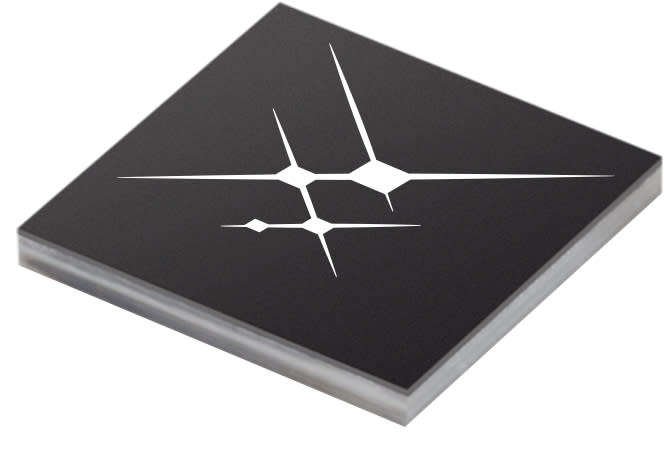3 Chip Stocks Set to Benefit from 5G
Many companies seemingly can't stop talking about 5G wireless. The technology promises significant improvements compared to 4G LTE, including improvements in peak transfer speeds as well as potentially dramatic improvements in latency, the latter of which could be very helpful in latency-sensitive applications like multiplayer gaming.
For consumers, the eventual transition to 5G should be a win, ushering in better mobile experiences and, potentially, accelerating the viability of many Internet of Things (IoT) applications. For investors in companies with exposure to that transition, it could mean fatter profits. Here are three chip companies set to profit from the industrywide move to 5G: Xilinx (NASDAQ: XLNX), Broadcom (NASDAQ: AVGO), and Skyworks (NASDAQ: SWKS).

Image source: Skyworks.
1. Xilinx
Xilinx builds chips known as field programmable gate arrays or FPGAs. These chips, in contrast to most others, can be reconfigured on the fly to perform different functions depending on the user's needs. While FPGAs aren't the ideal solution for workloads that don't change much, they're very useful in situations where workloads are constantly changing.
FPGAs are commonly used in communications infrastructure -- revenue from such applications made up 35%, 35%, and 33% of Xilinx's revenue in each of the first three quarters of its current fiscal year respectively -- so it's not surprising that the company is poised to profit from the 5G transition.
Indeed, Xilinx CEO Victor Peng said on the company's most recent earnings call that it's "seeing strong growth from the very early production 5G and pre-5G deployments, as well as some LTE upgrades" and that "[the] strong growth was primarily driven by 5G deployments in South Korea and a very early start of the ramp of 5G deployments in China."
Considering that the industry is still in the early innings of that 5G build-out, Xilinx looks poised to profit as that transition continues in the quarters and years ahead.
2. Broadcom
Another company set to benefit from the move to 5G is Broadcom.
A significant part of Broadcom's wireless revenue -- the company's wireless chip business is an important part of its overall semiconductor business -- comes from the sale of radio frequency (RF) chips based on its film bulk acoustic resonator (FBAR) technology. A key part of Broadcom's wireless growth story over the years is that as smartphone wireless subsystems have become increasingly complex, it has been able to sell correspondingly more capable FBAR chips into those devices, allowing it to boost its per-chip average selling prices and, ultimately, its revenue.
On the company's most recent earnings call, CEO Hock Tan explained that the 5G transition could drive "quite significant" FBAR content increases. The caveat, though, is that Broadcom isn't expecting a significant impact until beyond 2020, with, perhaps, a slight impact in 2020.
Now, the good news for Broadcom is that while it's not expecting the 5G transition to hit in full force until sometime after 2020, it's still expecting both dollar content gains as well as share gains in the iPhones that Apple is expected to launch later this year. Apple is by far Broadcom's largest wireless customer, making up roughly 80% of the latter's wireless revenue in its fiscal 2018, so Broadcom investors don't have to wait for 5G to arrive for the company's wireless business to return to growth.
3. Skyworks
Wireless chip company Skyworks also generally benefits from the move to more advanced wireless standards as such transitions drive up the amount of dollar content it sells into smartphones. The 5G transition -- as well as subsequent enhancements to 5G that are bound to roll out over time -- should enable a solid dollar content increase in smartphones for Skyworks.
What's also important to understand is that Skyworks is looking to areas beyond the smartphone market for additional growth. The company has cited areas like automotive, smart cities, and industrial IoT as markets into which it could sell wireless chips. While these markets already exist without 5G, a commonly held view is that the introduction of 5G will help make these types of IoT applications more mainstream.
So whether we're looking at Skyworks' core smartphone chip business or its growth opportunities beyond smartphones, the company looks set to benefit from the proliferation of 5G in the coming years.
More From The Motley Fool
Ashraf Eassa has no position in any of the stocks mentioned. The Motley Fool owns shares of and recommends Apple and Skyworks Solutions. The Motley Fool has the following options: long January 2020 $150 calls on Apple and short January 2020 $155 calls on Apple. The Motley Fool recommends Broadcom Ltd and Xilinx. The Motley Fool has a disclosure policy.

 Yahoo Finance
Yahoo Finance 